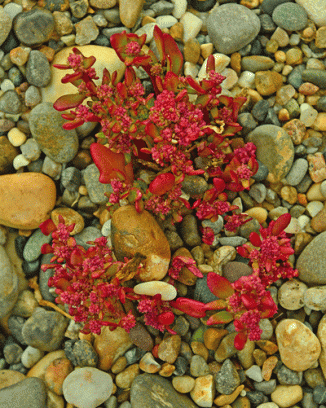Red Goosefoot is usually a sprawling, prostrate – occasionally erect to 60cm – plant species that bears tiny flowers (1mm) in dense clusters on reddish, leafy spikes. With stamens usually numbering 5, there are 2–4 tepals that are not joined above their middles. The triangular leaves are glossy and coarsely toothed. Growing to about 80cm, this is a fleshy plant that is totally hairless and tends to become red when fruiting, particularly on the stem and the underside of the leaves. It is found fairly widespread in the eastern half of Ireland, on waste ground, manure heaps and coastal, shingle beaches. It is an annual, native species that flowers from July to October and it belongs to the Goosefoot or Amaranthaceae family. It was formerly known as Chenopodium rubrum.
I first identified Red Goosefoot in 2019 growing at Lady’s Island in County Wexford and the identification was confirmed by Paul Green, BSBI Recorder for Counties Waterford and Wexford.
If you are satisfied you have correctly identified this plant, please submit your sighting to the National Biodiversity Data Centre



